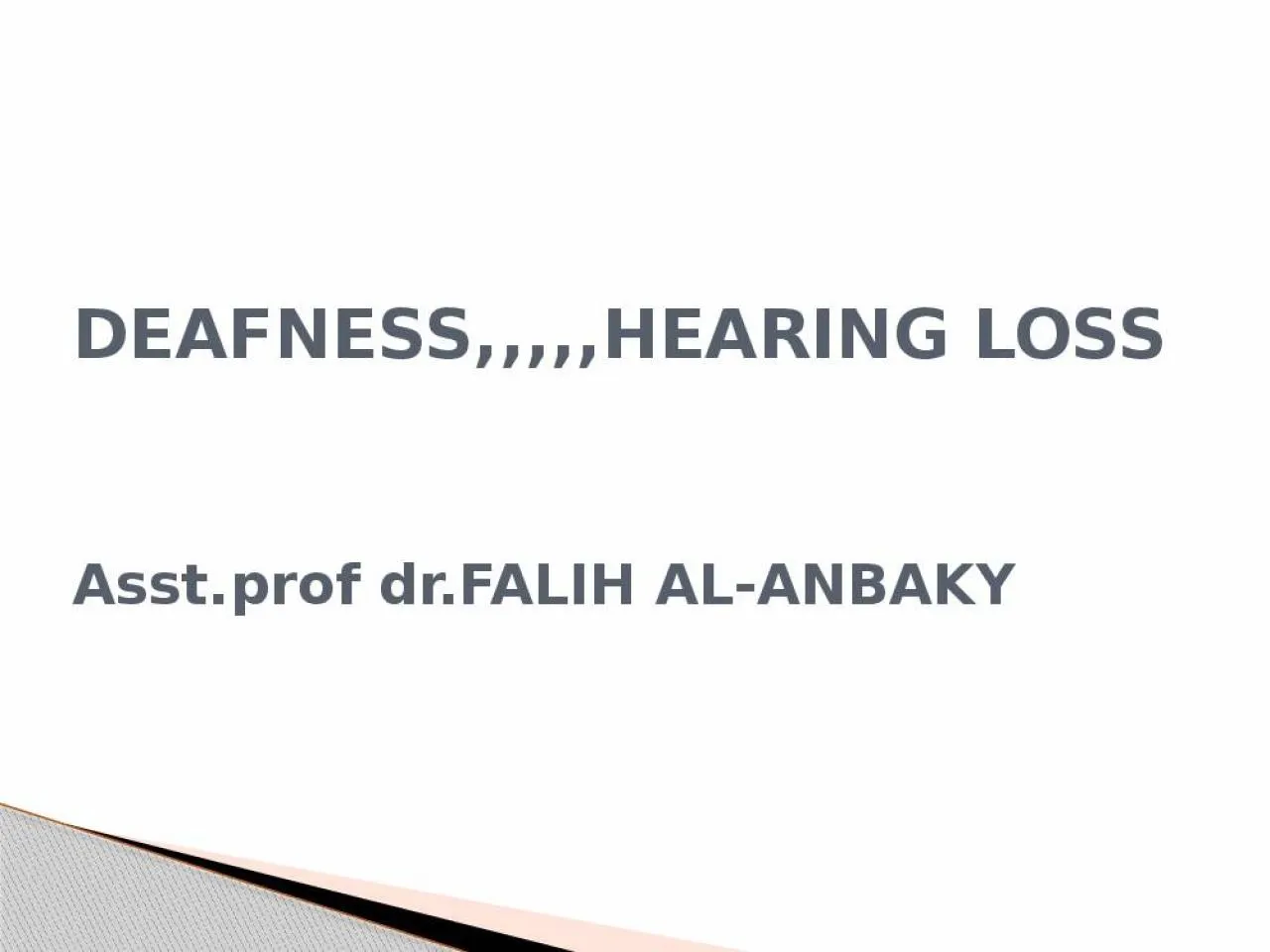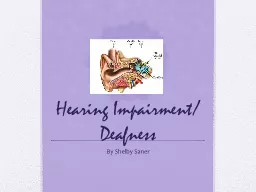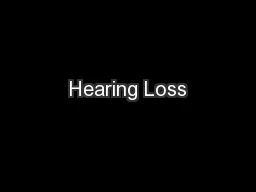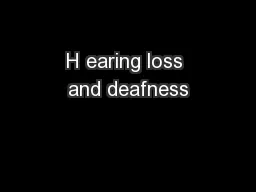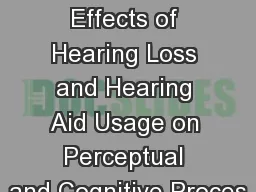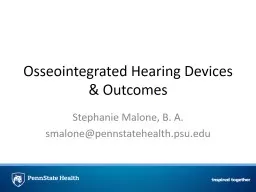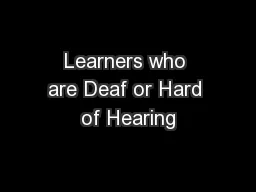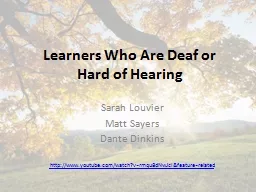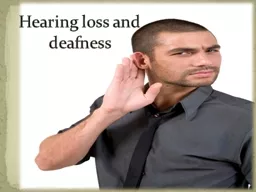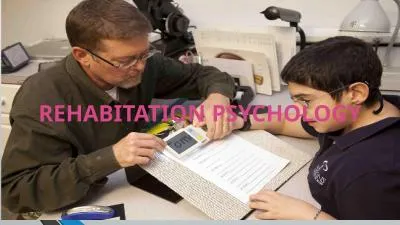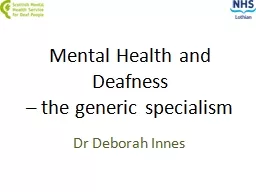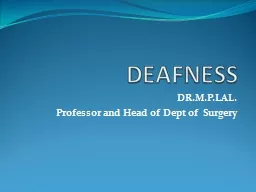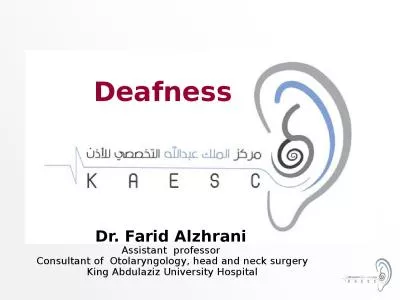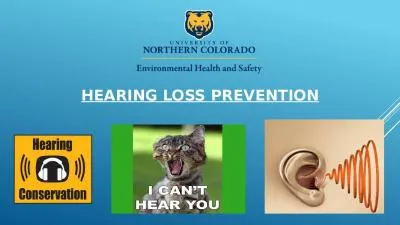PPT-DEAFNESS,,,,,HEARING LOSS
Author : gelbero | Published Date : 2022-05-17
Asstprof drFALIH ALANBAKY Hearing impairment deafness or hearing loss refers to the inability to hear or understand things either totally or partially Symptoms
Presentation Embed Code
Download Presentation
Download Presentation The PPT/PDF document "DEAFNESS,,,,,HEARING LOSS" is the property of its rightful owner. Permission is granted to download and print the materials on this website for personal, non-commercial use only, and to display it on your personal computer provided you do not modify the materials and that you retain all copyright notices contained in the materials. By downloading content from our website, you accept the terms of this agreement.
DEAFNESS,,,,,HEARING LOSS: Transcript
Download Rules Of Document
"DEAFNESS,,,,,HEARING LOSS"The content belongs to its owner. You may download and print it for personal use, without modification, and keep all copyright notices. By downloading, you agree to these terms.
Related Documents

